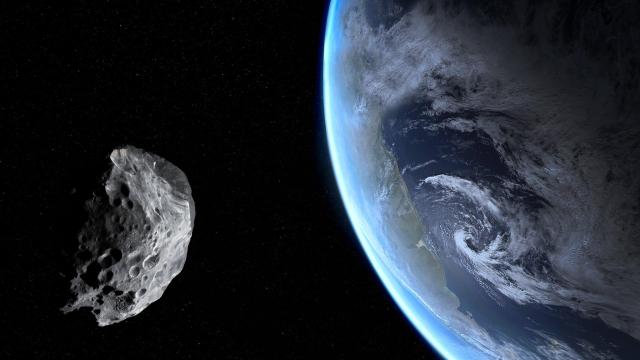Today, even as you struggle to focus on work after the weekend you hopefully enjoyed, a giant space rock is screaming through space within a “potentially hazardous” distance of Earth. The chances of a resultant armageddon are (and always have been) exceedingly thin, as the asteroid 2021 KTI is passing within 4.5 million miles of Earth, according to NASA’s Jet Propulsion Laboratory. But on a galactic scale, such a distance is still pretty close, given the great sprawling unknown of the universe.
Still, it’s a cold comfort knowing everything is technically fine, even as our space agency tracks a huge piece of rock that’s hurtling within a “potentially hazardous” proximity of our fragile planet at a speed of 64,374 km an hour.
How big is the 2021 KTI asteroid?
On the grand scale of asteroids — which is a horrifying thing to contemplate — it isn’t technically that big, but that’s only relative to other free-roaming space rocks that easily dwarf the biggest buildings on the planet.
For comparison’s sake, the asteroid designated 2021 KTI is about the size of the Eiffel Tower or Seattle’s Space Needle. That is still pretty large, especially if you imagine the Eiffel Tower careening towards Earth at 64,374 km/h. KTI will be followed by a few other asteroids, none of which are quite as big, but all of which are expected to pass us harmlessly by on or before Wednesday, without entering our planet’s atmosphere.
Even still, all of these asteroids are technically classified as Near Earth Objects (NEOs), which NASA defines thusly:
An asteroid or comet whose orbit brings it into or through a zone between approximately 91 million and 121 million miles (195 million kilometers) from the Sun, meaning that it can pass within about 30 million miles (50 million kilometers) of Earth’s orbit.
How often do asteroids actually make contact with Earth?
Asteroids vary significantly in size, and therefore so does the severity of their impact with Earth. According to NASA, smaller asteroids “a few meters in size are detected passing between Earth and the Moon’s orbit several times a month,” while even teensier meteoroids (less than three feet) make contact with terra firma every day. These aren’t the space rocks you need worry about; there are bigger, more concerning asteroids catapulting across the cosmos. On the bright side none (that we know of) will pose a risk to humanity for at least 100 years, the space agency contends.
Or, as the space agency put its:
The highest risk of impact for a known asteroid is a 1 in 714 chance of impact by an asteroid designated 2009 FD in 2185, meaning that the possibility that it could impact then is less than 0.2 per cent.
It’s a very good thing that asteroids don’t pummel the Earth with human-scale regularity. For upwards of forty years, it’s been the prevailing wisdom among paleontologists and researchers that the dinosaurs were wiped out by an asteroid smashing into the Earth. The impact was enough to lead to the extinction of the dominant species on the planet, save for avian dinosaurs.
Needless to say, the impact of a massive asteroid would probably result in some kind of global cataclysm, if not the end of human civilisation as it currently exists — but as long as NASA isn’t worried, you shouldn’t be either.

Leave a Reply
You must be logged in to post a comment.